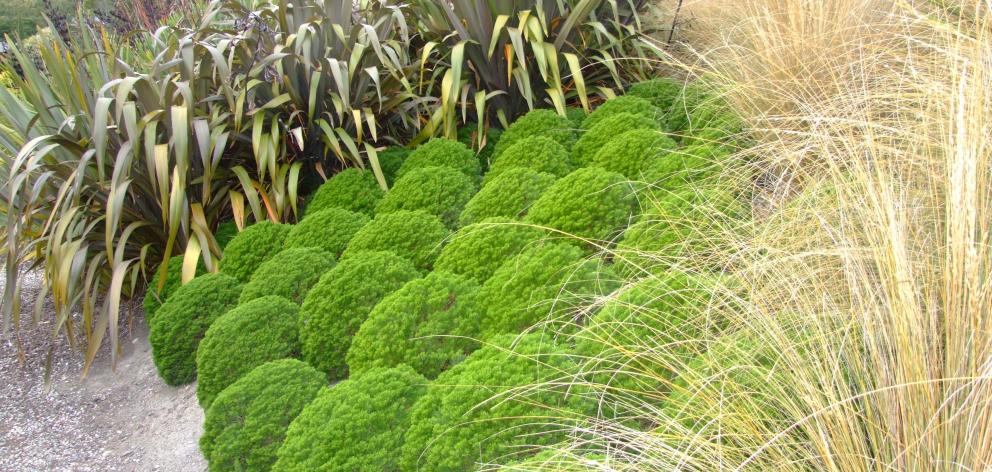
I do struggle with rhododendrons.
Most of the year they huddle in nasty little groups of dark green nothing, the dullest plant in the neighbourhood.
Their leaves are tough-looking, and probably have a sinister, bitter taste.
Rhododendrons spend winter in a sort of aesthetic hibernation, too lazy to please the eye yet taking up large amounts of space that could be occupied by other, harder working plants.

Over the years, sneakily and unnoticeable, some expand their furtive underground root systems and poke through the ground nearby, setting up brutal colonising empires that shade and kill plants around them.
Then spring comes.
When spring comes they go wild, like children imprisoned in a dark schoolroom for an 11-month algebra lesson, then liberated into a playground of dazzling light and unhindered growth.
The rhododendrons let loose, their reproductive organs bathed in hideous reds, pinks, purples and more shoot obscenely skywards, waving their pollen in the faces of passing bees that cannot resist its rampant charms, and wantonly displaying their organic attractions to passers-by with no thought for decorum or even simple modesty.
And how quickly it all is over, their garish colours weakening and fading and turning to brown before falling to the ground and rotting carelessly into the autumn.
So yes, I struggle with rhododendrons.
Hebes are fine.

They fill in spaces that need being filled, perhaps on a bank or in a darker section of your property.
Hebes ask for nothing.
They don’t demand constant watering; instead like loyal soldiers they will rally together uncomplainingly to beautify dull spots.
Dogged and resilient with their varied foliage of light and darker greens and reds, they even produce fussy little flowers that poke unassumingly just a few centimetres into the air.
Hebes are fine, but you can get sick of them.
Not long after you have made their acquaintance you begin to realise there are an awful lot of them.
They are everywhere.

And because of their ubiquitous nature, they somehow lose their value in the ranking system you subconsciously lay upon the plant world, and they slip down to a section you set aside for the likes of marram grass and certain types of pittosporum used for hedging.
Then you start to shun hebes because everyone has at least one in their garden, even people you actively dislike, and finally someone asks you what you think of them and you describe them as ‘‘rather common’’.
So hebes are fine, but only just.

I like a native fuchsia, despite them having a name that is notoriously difficult to spell.
This one grew quietly under another plant, and it pushed its way through one day with its little solitary and pendulous flowers (they have an average of 3-4 petals and little pointy bits that hang attractively if a little bit saucily from the centre) and its papery bark branches.
I like a native fuchsia, but I have fairly strict rules about what can grow where, when and why, and this particular plant was growing in an area in which it had no pre-approved permission.
Taking everything into account, I decided to show mercy, and give it a fighting chance.
With my most expensive set of secateurs, the ones with the cruel blades that glint viciously in the setting sun, I laughed a cruel thin laugh, and set to work, pruning the self-seeded native fuchsia to within an inch of its life, leaving it a clump of severed limbs in a shady spot halfway down the bank.
I cut it back, but I did not dig it up.I gave that fuchsia a fighting chance and to its credit, it fought back.
Just weeks later the pinky-red flowers were again poking through the plant that covered it; bravely it had survived a brutal attack and prospered.
Such plucky behaviour had to be rewarded.
That little native fuchsia is there to this day, extending its dominion on a dry little bank near the recycling bin.
Mostly, though, I am a merciful ruler who gives succour to the suffering, the weak and those in need.
In a quiet corner of a garden known as ‘‘the native garden’’ stands a tiny manuka, a sort that only grows about 60cm high.
Valiantly, it grew in a corner close to the hedge, even taller than its little garden shop sticker predicted, reaching perhaps 65cm as it thrived.
But close by, a flax cutting planted about the same time also prospered, hurling its fibrous leaves far and wide, eventually shrouding the manuka in shade and starving it of life.
And there, near the vegetable garden and not far from a thin little fence at the western end of the suburban property, a philosophical question arose.
Should the strength and dominance of the flax mean it can take the resources of another, with fatal results?
Should the garden be left to sort itself out using survival of the fittest as a governance model?
Should the weak and the vulnerable be left to the fight of their lives as occurs in that lawless society developed by Mother Nature herself?
No, no, and no.
The suburban garden is that haven where the lion can lie with the lamb (botanically speaking), where manuka are valued and protected, hebes only allowed in certain numbers and native fuchsia grudgingly allowed to live.
And that is what gardening is all about.
Comments
Fuchsia. This stamened pisteled 'lady in a dress' is a career ending word mispronounced.
But, rhodies as invaders? Luxury! I have campaigned, man and boy, against the wild Clematis. Ho, yes, and none of your White Rose of the bush carry on, if you don't mind. Clematis smothers trees. We stopped Old Man's Beard spreading to the West Coast, but no one gives a fig about clematis..urgurgle..help help, I'm bein' smothered!
